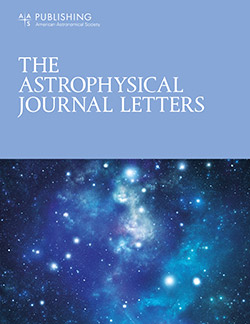一个旋转的类木行星表面冷却的减少导致对流区增长到一个有限的深度
IF 11.7
1区 物理与天体物理
Q1 ASTRONOMY & ASTROPHYSICS
引用次数: 0
摘要
最近朱诺号对木星引力场的测量和卡西尼号对土星环地震学的测量强烈表明,这两颗行星都有一个稳定的分层核心,重元素浓度仍然具有原始梯度。这种“扩散”分层核心的存在令人惊讶,因为人们长期以来一直认为,类木行星应该是完全对流的,因此应该是完全混合的。在地表冷却的驱动下,一个强烈的对流区在地表形成,并通过地下流体的夹带而加深。事实上,人们相信这个对流区会迅速增长,以至于整个地球将在不到一百万年的时间里被消耗殆尽。在这里,我们建议两个进程协同行动,为这个难题提供一个解决方案。所有的巨行星都在快速旋转,冷却速度随着时间的推移而下降。这两种影响都降低了流体携入对流区的速率。通过使用巨行星夹带的解析处方,我们证明了这两种效应,旋转和表面冷却的减少,导致对流区最初增长,但最终停止。对流界面渐近线的深度取决于旋转速率和稳定内部的分层。相反,在一个不旋转的行星上,或者在一个比当前模型显示的温度更高的行星上,对流区永远加深,最终跨越整个行星。本文章由计算机程序翻译,如有差异,请以英文原文为准。
Dwindling Surface Cooling of a Rotating Jovian Planet Leads to a Convection Zone That Grows to a Finite Depth
Abstract Recent measurements of Jupiter's gravitational field (by Juno) and seismology of Saturn's rings (by Cassini) strongly suggest that both planets have a stably stratified core that still possesses a primordial gradient in the concentration of heavy elements. The existence of such a “diffusely” stratified core has been a surprise as it was long expected that the Jovian planets should be fully convective and hence fully mixed. A vigorous zone of convection, driven by surface cooling, forms at the surface and deepens through entrainment of fluid from underneath. In fact, it was believed that this convection zone should grow so rapidly that the entire planet would be consumed in less than a million years. Here we suggest that two processes, acting in concert, present a solution to this puzzle. All of the giant planets are rapidly rotating and have a cooling rate that declines with time. Both of these effects reduce the rate of fluid entrainment into the convection zone. Through the use of an analytic prescription of entrainment in giant planets, we demonstrate that these two effects, rotation and dwindling surface cooling, result in a convection zone that initially grows but eventually stalls. The depth to which the convective interface asymptotes depends on the rotation rate and on the stratification of the stable interior. Conversely, in a nonrotating planet, or in a planet that maintains a higher level of cooling than current models suggest, the convection zone deepens forever, eventually spanning the entire planet.
求助全文
通过发布文献求助,成功后即可免费获取论文全文。
去求助
来源期刊

Astrophysical Journal Letters
ASTRONOMY & ASTROPHYSICS-
CiteScore
14.10
自引率
6.30%
发文量
513
审稿时长
2-3 weeks
期刊介绍:
The Astrophysical Journal Letters (ApJL) is widely regarded as the foremost journal for swiftly disseminating groundbreaking astronomical research. It focuses on concise reports that highlight pivotal advancements in the field of astrophysics. By prioritizing timeliness and the generation of immediate interest among researchers, ApJL showcases articles featuring novel discoveries and critical findings that have a profound effect on the scientific community. Moreover, ApJL ensures that published articles are comprehensive in their scope, presenting context that can be readily comprehensible to scientists who may not possess expertise in the specific disciplines covered.
 求助内容:
求助内容: 应助结果提醒方式:
应助结果提醒方式:


